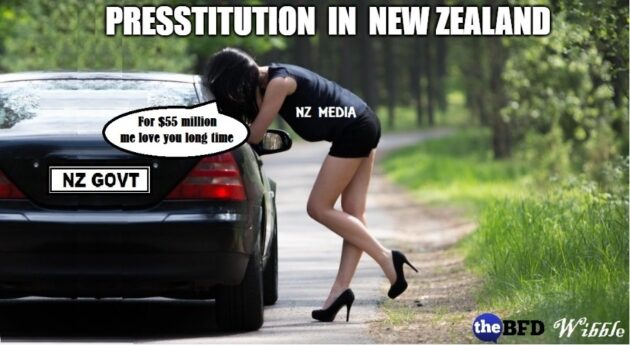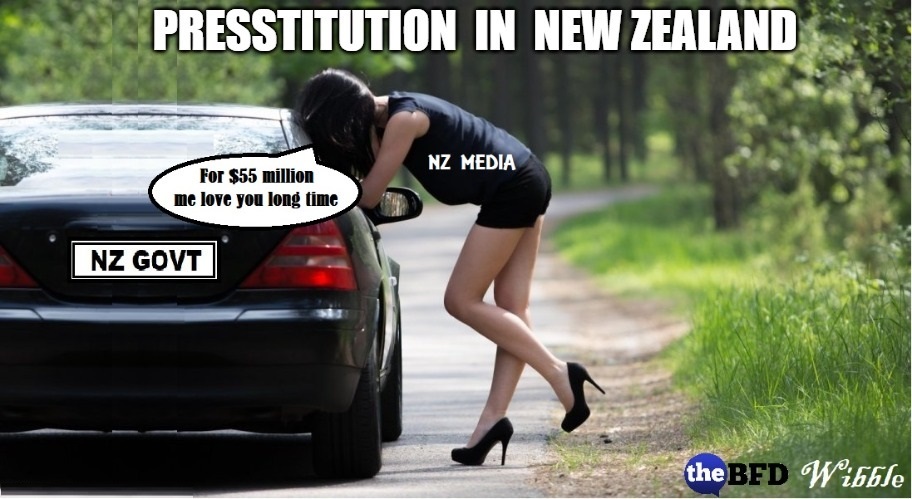Ananish Chaudhuri
Ananish Chaudhuri is Professor of Experimental Economics at the University of Auckland and the author, most recently, of “Nudged into lockdown? Behavioral economics, uncertainty and Covid-19”.
It is now widely recognised that in dealing with the Covid-19 pandemic, the New Zealand Government implemented policies that were often ill-advised, if not outright illegal. This applies to a number of issues including the implementation of the traffic light system, which raised concerns regarding potential discrimination with the Human Rights Commission and the operation of the managed isolation and quarantine facility (MIQ) that was questioned by the High Court.
But the policy that generated the most intense opposition by far was the decision to bring in vaccine mandates; essentially creating social segregation where the unvaccinated were no longer afforded the same privileges as those who were vaccinated. Even the Prime Minister went on record to say that this would create a segregated society, but she seemed quite blasé about the prospect of social disharmony that this might create.
It was noted by commentators at the time that the mandate set up a conflict between public health and fundamental rights.
There are multiple problems with such vaccine mandates, including the fact that New Zealand does not mandate any vaccines even for far more deadly diseases such as measles. It is widely recognised that the vaccine mandates go against s.11 of the New Zealand Bill of Rights Act 1990 providing citizens with the right to refuse medical treatment.
Parts of the vaccine mandate as related to police and defence forces were found to be unlawful and “not demonstrably justified” by our courts. Not to mention the fact that the mandates also likely violate s.19 of the New Zealand Bill of Rights Act 1990, the right to be free of discrimination.
Also, in judging whether the mandates were demonstrably justified, the judges often applied an incorrect lens. At times, in justifying the vaccine mandates judges have effectively asserted that the personal cost to workers laid off as a result of the mandates is irrelevant to the “demonstrably justified” test. This is incorrect.
For example, suppose a government concluded that a virus was so serious that it ordered vaccination for all members of the population (by force if necessary) and the vaccine was likely to be fatal to people with specific medical conditions. In this case, we would expect that a judge would have to balance the cost to the individuals for whom the vaccine was likely to be fatal against the deaths that might result amongst the rest of the population if they were not vaccinated.
The same principle applied here. Evidence suggests that if these mandates lower the quality of life of non-compliers by just 1% per year, then the mandates would need to prevent at least 5200 deaths from Covid-19 that are due to the pool of unvaccinated people.
The premise that one needs a mandate to get high vaccine take-up is also faulty. According to Our World in data, as of June 2, 2022, 80% of people in New Zealand are fully vaccinated with another 4% partially vaccinated. Denmark, which had no such mandates in place, has achieved a slightly better outcome with nearly 83% fully vaccinated!
Polls have found that there is a broad support for vaccine mandates among the general public. But the question is: do people understand how the vaccine trials were organised or what these vaccines are or are not designed to achieve?
Unfortunately, the answer is an emphatic no.
Recent research by John Gibson of Waikato University suggests that there is great misunderstanding about vaccine efficacy among the New Zealand public.
Gibson added the following question to an omnibus survey (using landlines and mobile phones) of a nationally representative random sample of voting age New Zealanders.
The vaccine for COVID-19 marketed by Pfizer is the main COVID vaccine available in New Zealand. Based on your own understanding, were the trials that allowed the authorization of this vaccine designed to:
(a) Test if the vaccine prevents infection and transmission of SARS-CoV-2 (the virus that causes COVID-19)?
(b) Test if the vaccine reduces the likelihood of getting symptoms of COVID-19?
(c) Test if the vaccine reduces the likelihood of getting seriously sick and dying?
(d) All of the above.
The poll was conducted in the first week of December 2021 when Parliament voted in the traffic light system restricting the rights of the unvaccinated. Consequently, vaccine-related questions and concerns should have been front and centre in people’s minds.
Around 3% chose each of options (a) and (b). Around 11% chose option (c) and nearly 80% chose option (d), i.e., all of the above. More than 95% of the respondents believed that the vaccines were more effective than they are and were trialled against highly stringent criteria.
What is the reality? Only option (b) is correct! The trials, for instance, have nothing to say regarding whether the vaccines can prevent serious illness or death! An article from October 2020 by Peter Doshi in the BMJ quotes Tal Zaks, the Chief Medical Officer of Moderna (which was another producer of mRNA vaccines, and used the same set-up as Pfizer):
“…Our trial will not demonstrate prevention of transmission…because in order to do that you have to swab people twice a week for very long periods and that is operationally untenable…Would I like to know that this prevents mortality? Sure, because I believe it does. I just don’t think it is feasible within the time-frame [of the trial] – too many people would die waiting for the results before we knew that.
In fact, earlier in August 2020, the Editor-in-Chief of the BMJ commented:
So instead we are heading for vaccines that reduce severity of illness rather than protect against infection, provide only short lived immunity, and will at best have been trialled by the manufacturer against placebo. As well as damaging public confidence and wasting global resources by distributing a poorly effective vaccine, this could change what we understand a vaccine to be. Instead of long term, effective disease prevention it could become a suboptimal chronic treatment. This would be good for business but bad for global public health.
We knew all of this long before the imposition of vaccine mandates in New Zealand and the resulting deep social divisions.
There is little point in blaming the public for their misperception. As Gibson points out, most people get their information from the media rather than medical journals. It is now widely recognised that in recent times large parts of New Zealand media, avid recipients of public interest journalism fund largesse from the government, have acted more as organs of the government rather than independent and objective arbiters of the truth.

Unfortunately long after the details of the Covid-19 randomised trials became public knowledge and it was clear what those trials showed regarding vaccine efficacy, New Zealand journalists were writing articles making claims that were incorrect, such as the vaccine “will prevent most if not all cases appearing and potentially prevent them from becoming infected at all” or that the vaccine was “about 95 per cent effective in preventing infection from the original Wuhan strain”.
Gibson further notes that in addition to not correctly reporting the relevant scientific literature, the media promoted opinions from supposedly independent local academics even though those academics were merely regurgitating talking points about the vaccine provided to them by the government in a carefully orchestrated public relations campaign. Gibson notes ruefully that the views of these commentators continue to be promoted uncritically without any mention of the potential conflicts of interest.

